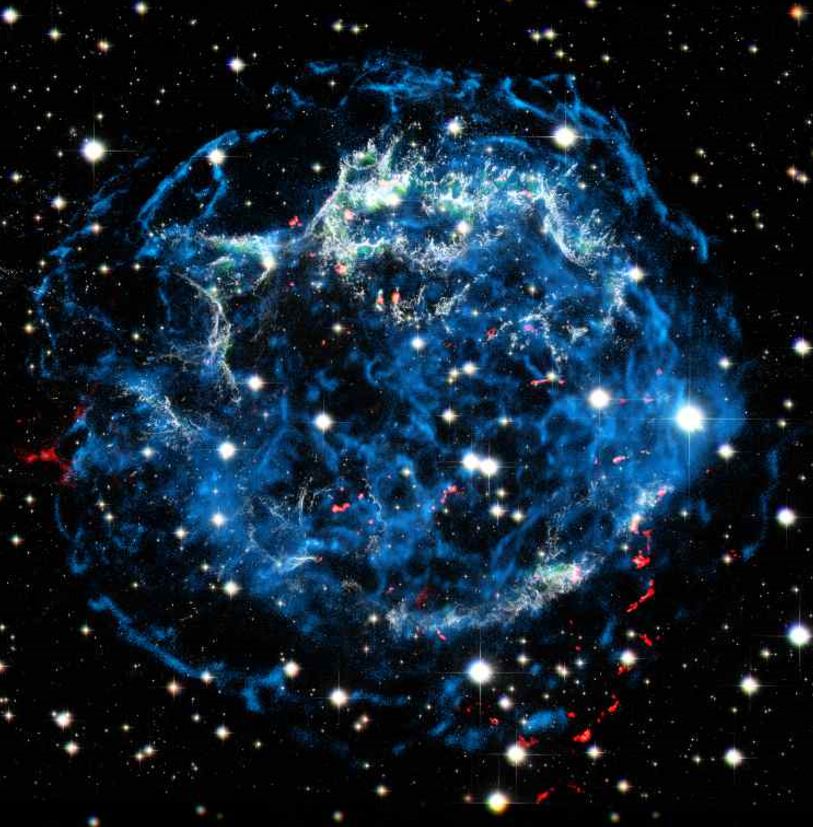Supernovae and their young remnants often interact with the circumstellar material ejected at the end of the progenitor stars’ lifetime. By studying the physical and chemical characteristics of this material, we can learn how massive stars stripped off their envelopes and exploded, which is crucial for understanding the connection between the diverse types of supernovae and progenitors.

A group of scientists from Korea and USA led by Bon-Chul Koo at Seoul National University (Korea) detected pristine circumstellar material from the progenitor of Cassiopeia A. Cassiopeia A is a remnant of the supernova event around AD 1680 in our Galaxy (Fig. 1). It provides a unique laboratory for the study of supernova explosion of massive stars, but the immediate progenitor of the supernova remains uncertain. The result of Koo and their collaborators indicates that the majority of iron (Fe) in this unprocessed circumstellar material is in the gas phase, not depleted onto dust grains as in the general interstellar medium. Their result is consistent with a theoretical model of dust condensation in material that is heavily enriched with carbon-nitrogen-oxygen cycle nuclear reaction products, supporting the idea that the material originated from the deep interior of the progenitor when the progenitor was likely in a blue supergiant phase.
The detection was made by using the Immersion Grating Infrared Spectrometer (IGRINS) mounted on the 4.3 m Discovery Channel Telescope at Lowell Observatory. IGRINS is a high-resolution near-infrared spectrometer developed under a collaboration between the University of Texas at Austin and the Korea Astronomy and Space Science Institute (KASI). “Our study demonstrated that observations with high enough spectral resolution can detect narrow emission lines from unprocessed circumstellar material, which will provide invaluable information about the supernova progenitor.,” Koo said. Their study was published in the journal Nature Astronomy.